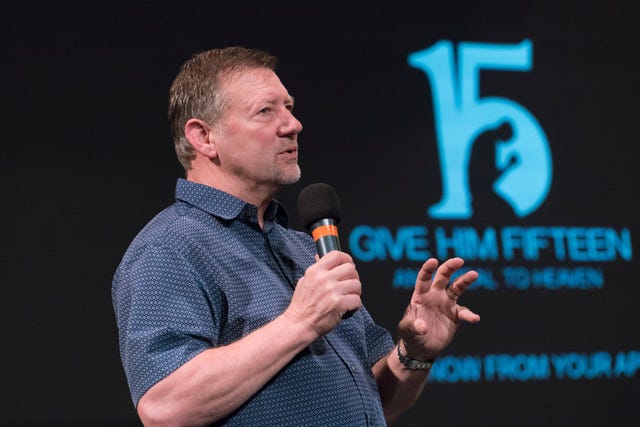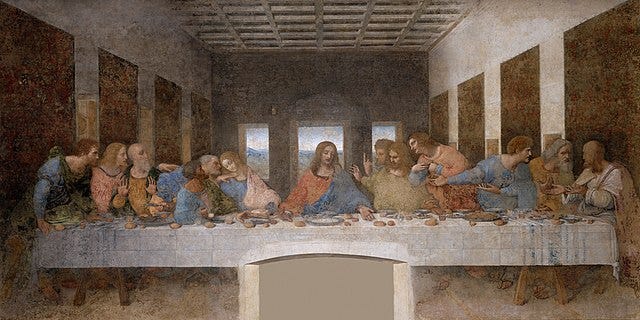One of the first reactions people often have when I describe the New Apostolic Reformation (NAR) is along the lines of “that’s absurd, who would follow these people?” For conservative evangelicals, NAR theology, including the idea of “modern-day apostles,” seems obviously “unbiblical.” For progressive Christians and more secular people, the role of apostles in NAR theology appears wildly authoritarian.


I don’t think these reactions are entirely wrong, but I also think there are several common misunderstandings that keep people from grasping both what NAR apostleship is and why it is so appealing to many. Here are some of them:
Myth #1: NAR apostles are “self-appointed.”
For people more familiar with other kinds of religious organizations or Christian denominations, NAR apostles seem to be making their own claims to the title of “apostle.” What most of of us miss, though, is that there’s a whole world of charismatic apostles and prophets who recognize each other.
NAR apostles are given that title when they are “commissioned” by already-recognized apostles. They are also recognized for already having followers, usually either in large churches or through networks that they lead.
So, instead of being “self-appointed,” NAR apostles are actually appointed through social recognition that supposedly indicates divine approval. (I’m sure there are some self-appointed apostles out there, but that’s not how independent charismatic leaders in NAR circles generally believe that things should work.)
Myth #2: NAR apostles are supposedly equal to the 12 apostles appointed by Jesus.
Again, I am sure there are some people out there saying this, but this is not the most widely accepted teaching in NAR contexts. To legitimate apostleship, NAR people commonly point to the fact that (depending on how you count) about 28 apostles are mentioned in the New Testament, ranging from Paul to Junia.
They believe that the 12 apostles appointed by Jesus had a unique and important symbolic role. But they believe that later apostles, such as Paul, had key functional roles in establishing churches.
Appealing to Ephesians 4:11 in particular, they believe in “fivefold” ministry roles, including apostles, prophets, evangelists, pastors, and teachers. As Peter Wagner cheekily pointed out, it seemed like evangelicals only believed in 60% of that verse if they didn’t think that modern apostles and prophets existed.
Of course, most Christians interpret New Testament mentions of “apostles and prophets” as foundational for the church but not necessarily still existing. But NAR theology is “restorationist,” arguing that the current era is a time when God is restoring things that were lost in the history of the church (and even since the Old Testament era). This restorationism most directly comes from the Latter Rain movement. (The what? Read on.)
Myth #3: NAR apostles are a new phenomenon.
There have been quite a few Christian movements calling themselves “apostolic” and/or appointing “apostles” and “prophets” over the last few centuries. (These movements have often also believed that they were restoring “Zion” and “the Tabernacle”—but that’s too much to cover here.)
The Scottish preacher Edward Irving (1792-1834) argued for modern apostles and, at his death, his “Irvingite” followers appointed 12 apostles to continue his movement. Today, one church group stemming from this movement counts about 9 million members (mostly in Africa).
Around the same time, Joseph Smith, Jr. (1805-1844) founded his own restorationist movement, complete with its own apostles and prophets, in the United States. The largest Mormon group, the Church of Jesus Christ of Latter Day Saints, now counts 17 million members (an inflated number, of course, due to not removing those who leave the LDS Church).
Around the turn of the 20th century, nascent Pentecostals frequently called themselves “apostolic,” as at the Apostolic Faith Mission on Azusa Street in Los Angeles, which is often portrayed as the origin of Pentecostalism. At the same time, leaders like John Alexander Dowie (1847-1907) (founder of the town of Zion, Illinois) more openly tried to restore the office of apostle. Today, “Zionist” churches tracing their roots to Dowie’s ministry are the largest religious group in South Africa.
The most important origin point for NAR ideas of apostleship, though, is the Latter Rain revival that began in North Battleford, Saskatchewan in 1948. This revival was based on prophecies indicating that God was restoring the church to its glory. Within two years, the idea of appointing apostles and prophets became a key teaching in many corners of this movement.
Along with the ministries of traveling healing evangelists like William Branham and Oral Roberts, the Latter Rain movement built a new “independent charismatic” sector of Christianity throughout North America (and other parts of the world soon after). After decades of growth through Word of Faith “prosperity” teachings and televangelist broadcasts, the ideas about prophets and apostles that came out of this sector were formalized by leaders like Bill Hamon, Cindy Jacobs, and Peter Wagner.
Myth #4: Modern-day apostles are “unbiblical.”
Weirdly, apostles (and prophets, for that matter) are probably the most biblical church offices. “Pastors,” as historian Beth Allison Barr points out, are really only mentioned in Ephesians 4:11 (that verse that includes apostles and prophets), and it’s not really clear what the New Testament means when mentioning roles like “elder” and “deacon.”
NAR leaders argue that, since the idea of “pastor” as a church office really only goes back to the Protestant Reformation, it makes sense for all of the offices mentioned in Ephesians 4:11 to be restored, just as that one was in Protestant churches. There might be good arguments against having apostles and prophets, but sticking to “biblical” leadership roles in churches is not a great one.
One of the best outcomes from an encounter with NAR ideas about apostles would be for Christians to admit how much historical distance there is between the writing of the Bible and our own modern contexts. This is something that “restorationist” movements struggle to do, as they’re rooted in the idea that that distance should be closed. If we read about a “tabernacle” where God’s presence rested, why should we not build such a thing in Illinois or Utah or Saskatchewan or Texas?
I don’t think that everything about movements to restore God’s glory on earth through apostles, prophets, or tabernacles is necessarily horrible. I do think that it would be far more faithful to the teachings of Jesus to accept that we live in a secular society and to give up fantasies about literally living in biblical stories that feature apostles or (as many NAR leaders reference) violent battles. After all, when Jesus’s own apostles wanted to call down fire on their enemies or to have him “restore the kingdom to Israel,” he rebuked them. The kingdom of God might instead be something that more gently emerges within the world as it exists.



Thanks for your piece Stephen. Having been among Pentecostals and charismatics for 40 years, and having also formally studied them for my doctorate, your comments seem clear, balanced and accurate to me. Well done and best wishes, Ant.